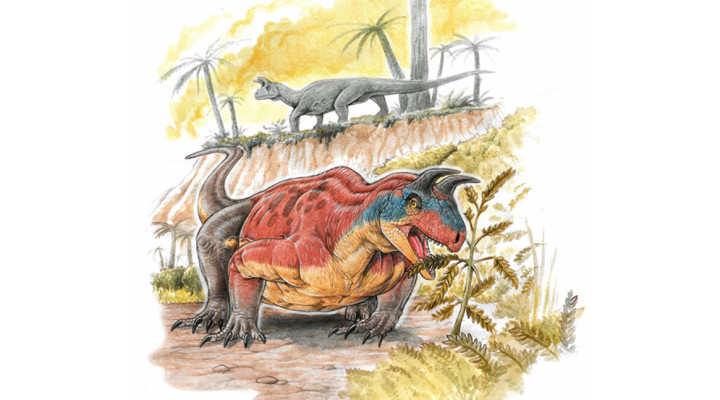BIOLOGICAL AND HEALTH SCIENCES
CONICET scientists were present in a paleontological publications ranking
The presentations of Shringasaurus indicus and the Isaberrysaura mollensis were some of the most voted by readers of the PLOS ONE science blog.
As it happened in 2016, the journal PLOS ONE called its readers to vote in blogs.plos.org for the best paleontological finds that appeared in open access science journals. Among the ten most chosen, there were two studies in which CONICET researchers participated.
The news of the find and the description of the Shringasaurus indicus, published in Scientfic Reports, which included the participation of Martín Ezcurra, CONICET associate researcher at the Museo Argentino de Ciencias Naturales “Bernardino Rivadavia” (MACN-CONICET) ranked sixth. In the same journal, the discovery of the Isaberrysaura mollensis in Patagonia, in which several paleontologists of the Council worked, ranked ninth. The first author of this study is Leonardo Salgado, CONICET principal researcher at the Instituto de Investigación en Paleobiología y Geología (IIPG, CONICET-UNRN).
Shringasaurus indicus is a reptile that lived 240 millions of years ago. It is an herbivore quadruped three or four meters long and about 1.5 tall up to the hips, with long neck and small head. The researchers think that this reptile used the long pair of horns on its orbits to have access to partners or delimit their territory.
Isaberrysaura mollensis is an ornithischia whose remains (almost one complete Skull and an incomplete post-skull) were found in the deposits of the Delta at Los Molles, in the province of Neuquén. This species is the first dinosaur of the Jurassic period of the Neornithischia order found in the South American subcontinent.
Apart from Leonardo Salgado, in the find and description of Isaberrysaura mollensis other three CONICET researchers participated: associate researchers Leandro Martínez and Rodolfo Coria, who belong to the al Instituto de Botánica Darwinion (IBODA; (CONICET – Academia Nacional de Ciencias Exactas, Físicas y Naturales) and the Museo “Carmen Funes” (Neuquén); and the postdoctoral fellow José Gasca, who works at the Museo Provincial de Ciencias Naturales “Dr. Prof. Juan A. Olsacher” (MOZ) in the city of Zapala (Neuquén).
